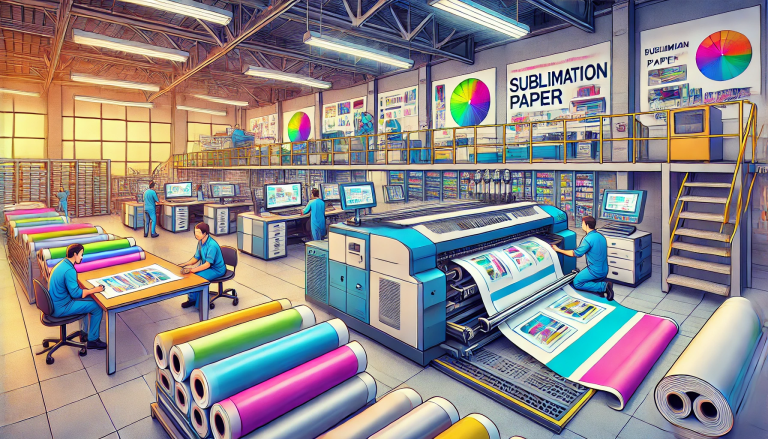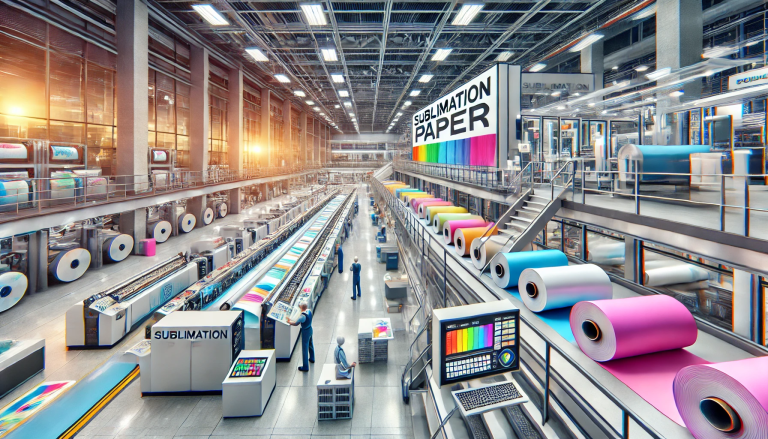“Sublimation Ink: The Heat Transfer Paper Solution!” – SUBLIMATIONTRANSFERPAPER – Vinyl Sublimation Paper Roll Factory, Digital Sublimation Paper Wholesale, Made in China
Introduction
In the world of custom printing and fabric decoration, sublimation ink and heat transfer paper are two popular tools. However, many beginners and even some experienced crafters often wonder whether they can use sublimation ink on heat transfer paper. This question is crucial as it can significantly impact the quality and durability of the final printed product.
The Nature of Sublimation Ink and Heat Transfer Paper
Sublimation ink is a special type of dye – based ink. When exposed to high heat and pressure, it undergoes a sublimation process, where it changes directly from a solid to a gas without passing through the liquid state. This gas then penetrates the fibers of polyester – based materials, creating a permanent and vibrant print.
On the other hand, heat transfer paper comes in different types. There are inkjet heat transfer papers for light – colored fabrics and dark – colored fabrics. These papers are designed to hold regular inkjet or laser printer inks. The inks sit on the surface of the paper and are transferred to the fabric through heat and pressure, usually creating a layer on top of the fabric rather than penetrating it.
The Incompatibility Issue
Using sublimation ink on traditional heat transfer paper is generally not a good idea. The main reason is the chemical and physical properties of the two materials. Heat transfer papers are not formulated to handle the sublimation process of sublimation inks.
When you apply sublimation ink to heat transfer paper and then try to transfer it using heat, the ink may not sublimate properly. Instead of turning into a gas and penetrating the fabric, it might remain on the surface of the paper or transfer incompletely. This can result in a faded, blurry, or uneven print. The lack of proper interaction between the sublimation ink and the heat transfer paper’s surface can lead to poor – quality transfers that lack the vibrancy and durability expected from sublimation.
Exceptions and Special Cases
There are some specialized heat transfer papers on the market that are designed to work with sublimation inks. These papers are often referred to as “sublimation – compatible heat transfer papers.” They have a unique coating that allows the sublimation ink to adhere and sublimate effectively.
However, even with these specialized papers, the results may not be as good as using traditional sublimation paper onester fabrics. Sublimation paper is specifically engineered to release the sublimation ink cleanly and ensure even distribution during the sublimation process. Sublimation – compatible heat transfer papers may not offer the same level of performance, especially in terms of color vibrancy and long – term durability.
Recommended Approach
If you want to achieve high – quality sublimation prints, it is best to use sublimation ink with traditional sublimation paper on polyester – based materials. This combination has been proven to deliver the most vibrant, long – lasting, and professional – looking results.
If you are working with non – polyester fabrics or want to use heat transfer techniques on a variety of materials, regular heat transfer paper with appropriate inkjet or laser printer inks is the way to go. Each method has its own advantages and is suitable for different applications, so it’s important to choose the right tools for the job.
Conclusion
In conclusion, while it may seem tempting to use sublimation ink on heat transfer paper, it is generally not advisable due to the incompatibility between the two. Unless you are using specialized sublimation – compatible heat transfer papers, which may still have limitations, sticking to the traditional combination of sublimation ink, sublimation paper, and polyester fabrics will ensure the best results for your sublimation projects.





